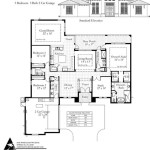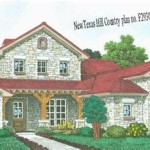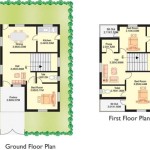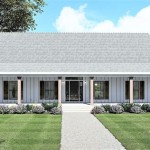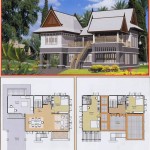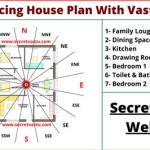Images of Tuscan House Plans: Exploring Architectural Beauty and Design Elements
Tuscan house plans evoke visions of sun-drenched landscapes, rolling hills, and rustic elegance. These architectural designs, inspired by the Tuscany region of Italy, emphasize natural materials, warm colors, and a seamless connection between indoor and outdoor living spaces. Exploring images of Tuscan house plans allows one to appreciate the nuances of this architectural style and its potential for creating a warm and inviting home.
The defining characteristics of Tuscan house plans are readily apparent in visual representations. These plans typically feature low-pitched tile roofs, often in earthy terracotta hues. Stucco exteriors, frequently textured to create a sense of age and history, are also common. Arched doorways and windows add to the romantic aesthetic, while stone accents provide visual interest and a sense of solidity. Images often showcase courtyards, fountains, and lush landscaping, further enhancing the Tuscan ambiance.
Examining images of various Tuscan house plans provides valuable insights into different design interpretations and spatial arrangements. From sprawling villas to more modest single-story homes, the style can be adapted to suit a range of lot sizes and lifestyle preferences. The visual representation can help prospective homeowners envision the possibilities and determine which elements resonate with their personal taste.
Key Point 1: Core Architectural Elements Visualized
Tuscan house plans are immediately identifiable through a specific set of architectural elements. Examining images allows one to clearly visualize these key features.
Roofs: Traditional Tuscan roofs are typically low-pitched and covered in terracotta tiles. These tiles, often barrel-shaped, create a distinctive undulating pattern. Images highlight the color variations within the terracotta, ranging from deep reds and oranges to lighter, more weathered tones. The overhangs of the roof may be minimal, but often incorporate decorative brackets or exposed rafter tails, adding to the rustic charm.
Exteriors: Stucco is a dominant material in Tuscan architecture. Images showcase variations in stucco texture, from smooth, refined finishes to rougher, more rustic applications. The color palette generally revolves around warm earth tones, including creams, beiges, and ochers. Stone accents, often used around doorways, windows, and at the base of the house, provide a contrasting element. The images reveal how natural stone, in its various forms, contributes to the sense of timelessness.
Windows and Doors: Arched windows and doors are a hallmark of the Tuscan style. Images demonstrate how these curved openings soften the lines of the structure and create a more inviting atmosphere. Window frames are often made of wood, stained in dark hues to contrast with the light-colored stucco. Shutters, frequently louvered or paneled, are another common feature, adding both visual interest and practical functionality. Large doorways and windows promote natural light and ventilation, crucial aspects of Tuscan design.
Courtyards and Outdoor Spaces: Tuscan homes are designed to seamlessly integrate indoor and outdoor living. Images frequently feature courtyards, patios, and loggias, which provide sheltered spaces for relaxation and entertainment. These outdoor areas are often adorned with fountains, gardens, and pergolas, creating a tranquil and inviting atmosphere.
Visual analysis of these architectural elements allows potential homeowners to appreciate the defining characteristics of Tuscan house plans and to assess their suitability for their specific needs and aesthetic preferences.
Key Point 2: Interior Design Features Depicted in Images
The interior design of a Tuscan house is just as important as the exterior. Images showcase the unique features that define the Tuscan aesthetic within the home.
Flooring: Natural materials are paramount in Tuscan interior design. Images often reveal the use of terracotta tiles, stone, or hardwood flooring. These materials provide a warm and durable foundation for the living spaces. Terracotta tiles, in particular, are a quintessential element, echoing the exterior roof and creating a sense of continuity between indoors and outdoors.
Walls and Textures: Interior walls are frequently finished with textured plaster or stucco, mirroring the exterior. This creates a sense of depth and visual interest. Images sometimes show exposed brick or stone walls, adding a rustic and authentic touch. Paint colors typically remain within the warm earth tone palette, complementing the natural materials and creating a cozy atmosphere.
Ceilings: Exposed wooden beams are a common feature in Tuscan-style homes. Images of these ceilings highlight their structural beauty and the warmth they add to the space. Beams may be stained in dark hues or left natural, depending on the overall design scheme. Vaulted ceilings are also frequently seen, creating a sense of grandeur and spaciousness.
Kitchens: Tuscan kitchens are often the heart of the home. Images reveal the use of natural stone countertops, wooden cabinetry, and large farmhouse sinks. Backsplashes are typically made of tile or stone, adding texture and visual interest. Open shelving is another common feature, allowing for the display of pottery, copper cookware, and other decorative items. The overall design emphasizes functionality and a connection to nature.
Furnishings: Tuscan interiors are typically furnished with comfortable, well-worn pieces. Images display the use of large, upholstered sofas, wooden tables, and wrought iron accents. Antiques and vintage items are often incorporated to add character and a sense of history. Textiles are typically natural fibers, such as linen and cotton, in muted colors and patterns. The overall effect is one of relaxed elegance and timeless appeal.
The visual representation of these interior design features provides a comprehensive understanding of the Tuscan aesthetic and allows potential homeowners to envision how they can create a warm and inviting living space.
Key Point 3: Variations and Adaptations in Tuscan House Plans
While the core elements of the Tuscan style remain consistent, there is room for variation and adaptation to suit different needs and preferences. Images showcase the diverse ways in which the Tuscan aesthetic can be interpreted.
Modern Tuscan: Some Tuscan house plans incorporate modern elements, such as clean lines, large windows, and open floor plans. Images of these designs reveal a balance between traditional and contemporary aesthetics. The use of natural materials remains important, but the overall design is more streamlined and minimalist.
Mediterranean Influence: The Tuscan style shares many similarities with other Mediterranean architectural styles. Images sometimes depict homes that blend elements of Tuscan, Spanish, and Italian design. These homes may feature white stucco exteriors, red tile roofs, and arched doorways, creating a unified and harmonious look.
Regional Adaptations: The Tuscan style can be adapted to suit different climates and landscapes. Images showcase homes that incorporate local materials and design elements. For example, a Tuscan-style home in a colder climate may feature a steeper roof pitch to accommodate snow, while a home in a warmer climate may have larger windows and more extensive outdoor living spaces.
Smaller-Scale Tuscan: While Tuscan villas are often large and sprawling, the style can also be adapted to smaller-scale homes. Images depict cozy cottages and townhouses that incorporate key Tuscan elements, such as stucco exteriors, terracotta tile roofs, and arched doorways. These smaller homes often feature intimate courtyards and gardens, creating a private and tranquil oasis.
Customizations and Personalization: Images of various Tuscan house plans showcase the potential for customization and personalization. Homeowners can choose to incorporate unique features, such as wine cellars, home theaters, or art studios, to suit their specific needs and interests. The Tuscan style provides a flexible framework for creating a home that is both beautiful and functional.
By examining images of these variations and adaptations, potential homeowners can gain a broader understanding of the possibilities and identify the specific design elements that resonate with their personal taste and lifestyle.
The exploration of images of Tuscan house plans offers a valuable resource for understanding the architectural beauty and design elements characteristics of this timeless style. The visualization of different architectural elements, interior design features, and stylistic variations allows for a comprehensive appreciation of this architectural design.

Tuscan House Plan 4442

Tuscan House Plans Sater Design Collection

Tuscan House Plans Sater Design Collection

Tuscan House Plans Sater Design Collection

House Plans Stock Home Floor Weber Design Group Tuscan Mediterranean Style

Best Tuscan Style House Plans 100 Nethouseplans

Plan 65871 Tuscan Style House With Bonus Room 2106 Sq Ft

Tuscan House Plan Luxury Mediterranean Dream Home Floor Plans Mansion

Best Tuscan Style House Plans 100 Nethouseplansnethouseplans Page 3

Modern 3 Bedroom Double Story House Plan For Plandeluxe

